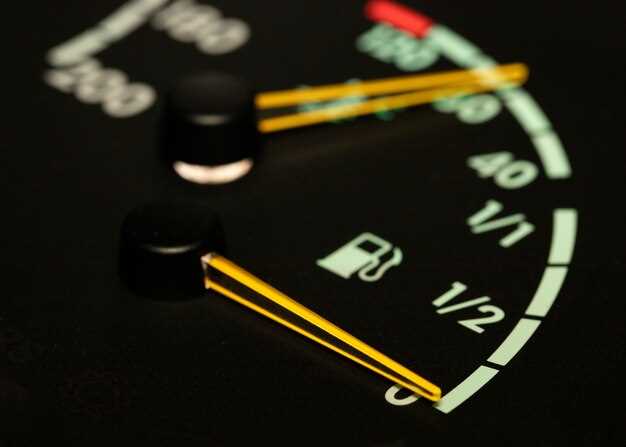
Understanding the dynamics of a car is crucial for any driver seeking to enhance their skills on the road or track. Among the most essential aspects of vehicle handling are the concepts of oversteer and understeer. These two terms describe how a car responds when cornering, particularly in relation to its balance and grip on the road surface. Mastering these driving techniques can significantly improve your control, safety, and overall performance.
Oversteer occurs when the rear wheels lose traction before the front wheels, often leading to a rotation of the vehicle. This can result in a thrilling but potentially dangerous situation, as it requires quick reflexes and an understanding of how to correct the car’s trajectory. Conversely, understeer happens when the front wheels lose grip, causing the car to move straight instead of turning. Both situations can be tricky, but learning to manage them effectively is key to achieving a well-balanced drive.
In this article, we will delve into the mechanics behind oversteer and understeer, offering practical tips and techniques to manage each scenario. By refining your understanding of these concepts, you can improve your driving balance and enhance both your confidence and safety while navigating various driving conditions.
Identifying Oversteer and Understeer: Key Signs for Drivers

Understanding the signs of oversteer and understeer is crucial for maintaining control and achieving optimal balance while driving. Both conditions present distinct characteristics that every driver should be aware of in order to react appropriately.
Oversteer occurs when the rear wheels lose traction before the front wheels. Key signs include:
- Your car begins to rotate or slide out at the rear during turns, making it feel like the back end is breaking loose.
- The steering wheel feels light or unresponsive as the vehicle turns sharper than intended.
- Counter-steering is required to regain control, as you need to steer towards the direction of the skid.
Understeer, on the other hand, happens when the front wheels lose grip, causing the car to continue straight when you intend to turn. Signs of understeer include:
- The vehicle feels heavy in the front as you steer, often resulting in a lack of response to steering input.
- The car literally pushes forward, failing to navigate the corner effectively.
- Applying more steering does not help; instead, it exacerbates the situation by increasing speed, worsening the skid.
Being able to identify whether you are experiencing oversteer or understeer is vital. Implementing corrective actions in real-time can help restore balance to your driving and enhance your overall safety on the road.
Techniques for Correcting Oversteer and Understeer in Various Conditions
Correcting oversteer and understeer is essential for maintaining control and achieving balance in a car, especially in challenging driving conditions. Understanding the differences between these two handling characteristics allows drivers to employ effective techniques tailored to each scenario.
In cases of oversteer, where the rear wheels lose traction and the car begins to rotate, the key to correction involves countersteering. This technique requires the driver to turn the steering wheel in the opposite direction of the skid. Additionally, reducing throttle can help regain traction on the rear wheels. In slippery conditions, such as wet or icy roads, it may be beneficial to gently ease off the brakes to minimize weight transfer and restore grip.
On the other hand, understeer occurs when the front wheels lose traction, causing the vehicle to continue straight rather than follow the intended path. To correct understeer, drivers should reduce throttle input and not abruptly turn the steering wheel. Instead, easing off the steering can help shift weight back to the front tires, enhancing grip. In scenarios involving tight corners, a slight increase in braking can also aid in shifting weight forward, potentially allowing for better steering response.
The balance of the car is crucial in both situations. Adjusting tire pressures can significantly impact handling; under-inflated tires may lead to increased rolling resistance and further exacerbate understeer, while over-inflated tires can strip away grip, promoting oversteer. Therefore, regular tire checks and adjustments based on driving conditions can greatly enhance vehicle stability.
In varying conditions, such as rain, snow, or gravel, adapting driving style becomes imperative. Anticipating the terrain and adjusting speed accordingly helps maintain control. Traction management systems available in modern vehicles can also aid drivers in maintaining balance, supporting corrections during both oversteer and understeer scenarios.
Ultimately, effective correction techniques for oversteer and understeer hinge on understanding vehicle dynamics and practicing smooth, deliberate inputs. Mastery of these techniques fosters safer driving, equipping drivers to navigate a variety of road conditions with confidence.
Optimal Vehicle Setup for Preventing Oversteer and Understeer

Achieving the right car balance is essential for optimal vehicle performance, particularly when it comes to managing oversteer and understeer. The setup of your vehicle plays a crucial role in determining how it responds to steering inputs, acceleration, and braking forces. A well-balanced car can significantly enhance driving confidence and safety.
To prevent oversteer, ensure that the rear suspension is adequately tuned. This can involve adjusting the spring rates and damping settings. Softer rear springs can help maintain rear grip during cornering, enabling smoother inputs without sudden loss of control. Additionally, modifying the anti-roll bar stiffness can fine-tune how the car transitions through corners, promoting better traction at the rear end.
For combating understeer, it’s essential to focus on front-end setup. Increasing front grip can often involve stiffening the front suspension, which allows for quicker responses when turning. Ensuring the front tires have adequate pressure and grip is critical as well. Employing a slightly larger front anti-roll bar can help transfer weight more effectively onto the front tires during cornering, enhancing their ability to maintain traction.
Weight distribution also plays a vital role in vehicle balance. Ideally, a near 50/50 weight distribution between the front and rear axles can promote stability. If your car’s weight distribution leans more toward one end, consider adjusting the placement of components or using ballast strategically. This modification can help in achieving a neutral balance, minimizing the tendencies toward either oversteer or understeer.
Tire selection and maintenance are equally important. Choosing tires that provide a match for your driving style and the conditions you face can help maintain a balanced vehicle. Regularly checking tire wear and ensuring consistent pressure across all tires optimizes grip levels, directly influencing handling characteristics.
Finally, constant evaluation and adjustments based on driving feedback are critical. Each car responds differently to changes in setup, and what works for one may not work for another. Regularly test the vehicle under various conditions to assess balance and adjust settings accordingly. This methodical approach will significantly enhance your ability to manage both oversteer and understeer effectively, leading to a more enjoyable and safer driving experience.




